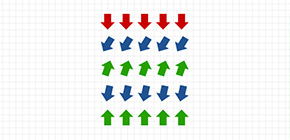
Detection and in-situ switching of un-reversed interfacial antiferromagnetic spins in a perpendicular exchange-biased system
Abstract
When the materials possessing different magnetism such as ferromagnet and antiferromagnet are coupled, the new magnetism which does not appear in either ferromagnet or antiferromagnet is generated. This new magnetism is called as an exchange anisotropy and is widely used in spinelectronics devices such as a read-head of hard-disk-drives (HDD) and angular velocity sensors. Although the exchange anisotropy has already been in a practical use, its microscopic mechanism has been a mystery since the discovery in 1956. In particular, huge efforts have been devoted to clarify whether the antiferromagnetic spins moves or not because antiferromagnetic spins have a key role in a generation of the exchange anisotropy. To this question, our group obtained a clear answer as “the antiferromagnetic spins are slightly canted but are not fully reversed” by means of the soft X-ray magnetic circular dichroism system in BL25SU SPring-8, Japan. The frustrated spin structure generated by this antiferromagnetic spin canting determines the minimum thickness to appear the exchange anisotropy, which is an important parameter to determine the high-integration and the downsizing of the devices.
This achievement was published in Physical Review Letters by the American Physical Society on August 8, 2012.
Related links:

